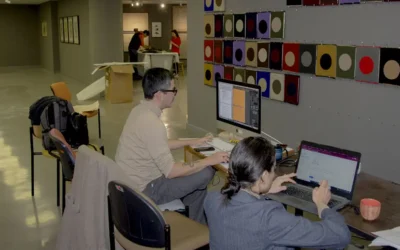Meet Baseline Visitor Expectations with a Multimedia Museum CMS

Rachael Cristine Woody
In order to effectively provide digital visitors with a successful museum Collections Management System (CMS) interaction, you need to meet baseline visitor expectations. We’ve previously discussed digital visitor types and expectations on this blog and those posts are linked below for your convenience.
The topic we’re exploring today is a continuation of our miniseries on the multimedia museum CMS. (You can read last week’s post A Bigger Picture is Possible with a Multimedia Museum CMS here). Today’s post will review the top three baseline expectations digital visitors have when they visit the museum CMS, and how a multimedia museum CMS helps us meet (and exceed) those expectations.
For related reading on the museum digital visitor, please see Rachael’s previous Think Clearly posts: How to Improve Collection Discovery Within the Museum CMS, The Top 4 Things a Museum Needs to Know About the Digital Visitor, 5 Methods to Improve the Museum Digital Experience, and Museum Digital Collections User Types & Expectations.
If It’s Not Online, It Doesn’t Exist
The first thing to understand about our digital visitor is that if it’s not online and in front of them, it doesn’t exist. They don’t know what we have in our CMS and in our museum collections, nor should we ever expect them to. So, if we want digital visitors to be aware of and engage with museum objects, we have to make that content obvious and easy to find. With that in mind, if the museum CMS doesn’t support multimedia files (ex: MP4 or MP3) and you have to store and serve them up somewhere else (ex: YouTube), then they might as well not exist. If you’re forced to either: 1. Omit the other multimedia files and hope the visitors know to ask for them; or 2. Use multiple platforms to attempt to deliver multimedia files online, you’re in an untenable predicament. Neither of these options are optimal nor do they meet baseline user expectations. It’s time move on to a multimedia-supporting museum CMS.
Everything Is in One Spot
Related to the first point—if it’s not in front of digital visitors it doesn’t exist—visitors have the reasonable expectation of related items being grouped together. So, if an object is related to other multimedia material, there needs to be clear and obvious inclusion of that content. Visitors are not going to take the time to drill down into the search results on the off chance there’s more related content—it has to be presented together in order for the digital visitor to learn of its existence and to understand the linkage.
“If You Liked This Product, You Might Like…”
Finally, thanks to online retail behemoths such as Amazon, we have all been conditioned to believe that anything we look at online will come with suggested content. When constructing a digital exhibit experience, I encourage you to think about how you can provide a similar mechanic. While we as museum professionals craft exhibits based on an overall subject, creator, or theme; visitors may wish to engage with one kind of multimedia content. For example, a visitor may wish to enjoy all oral history content—no matter the subject, creator, or theme. We need to expand our consideration of what related content can be and add multimedia types as a content category our visitors wish to consume.
Conclusion
In our first post we learned how a multimedia museum CMS can provide important contextual information, deliver a fuller and more accurate cultural experience, and help tell a more inclusive story. And today we reviewed how a multimedia CMS supports our quest to meet baseline user expectations. Next week we’ll conclude our miniseries and take a deep dive into how a multimedia museum CMS supports user experience best practices.

Rachael Cristine Woody
Expert Rachael Cristine Woody advises on museum strategies, collections management, and grant writing for a wide variety of clients. Register here for the next webinar in Rachael’s series on Collections Management System Essentials for Impact on 12/16, where she’ll expand on why the multimedia CMS is the new CMS standard. Learn about Lucidea’s Argus solution for multimedia museum collections management.
Similar Posts
How to Incorporate Interns in Museum CMS Projects: Data Creation
A museum expert details how interns can be successfully included in museum CMS projects at the data creation stage.
How to Incorporate Interns in Museum CMS Projects: Data Capture
A museum expert highlights how interns can be included in museum CMS projects at the data capture stage
How to Incorporate Interns in Museum CMS Projects
A museum expert highlights how interns can be included in museum CMS projects with three project ideas.
Create a Start-to-Finish Process for Cataloging Objects in the Museum CMS
A museum expert outlines the start-to-finish process for cataloging objects into a new museum CMS.
Hosting service
Enjoy all of the benefits of your Lucidea solution with secure, reliable, stress free hosting
Programs & incentives
No matter your size or budget, we’ve got you covered, today and tomorrow




Leave a Comment
Comments are reviewed and must adhere to our comments policy.
0 Comments